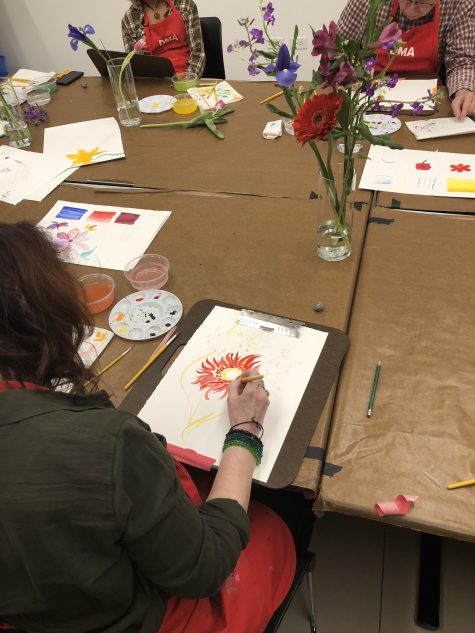We’re excited to have selections from the Guerrilla Girls’ Portfolio Compleat on view through September 9, 2018, in the Rachofsky Quadrant Gallery. But you might be wondering “who are the Guerrilla Girls” . . .
The Guerrilla Girls are feminist activist artists. Over 55 people have been members over the years, some for weeks, some for decades. Our anonymity keeps the focus on the issues, and away from who we might be. We wear gorilla masks in public and use facts, humor, and outrageous visuals to expose gender and ethnic bias as well as corruption in politics, art, film, and pop culture. We undermine the idea of a mainstream narrative by revealing the understory, the subtext, the overlooked, and the downright unfair. We believe in an intersectional feminism that fights discrimination and supports human rights for all people and all genders. We have done over 100 street projects, posters, and stickers all over the world. . . . We also do projects and exhibitions at museums, attacking them for their bad behavior and discriminatory practices right on their own walls. . . . We could be anyone. We are everywhere. (guerrillagirls.com)
The Portfolio Compleat is a new acquisition to the DMA’s collection. The works span more than two decades, but many of them are now as relevant as ever. Since they started, the Guerrilla Girls have been prolific, accumulating a large catalogue over time. We chose to display the works as you see them below, so that visitors can read a large number of the posters and see the wide reach of their artistic complaints.

The videos in this space point to issues like the lack of non-male, non-white representation within specific institutions. As a large, encyclopedic museum, the DMA could be listed among the museums under critique. In recent years, our curators have sought to be more inclusive in the works we show and collect. Currently on view are many works and multiple exhibitions by women artists. But, of course, this is an ongoing conversation with a long road ahead.
In the central seating area, we have provided books created by the Guerrilla Girls that are reminiscent of zines. Zines are self-published magazines or artist books associated with niche subcultures that are usually produced via photocopier and distributed for low to no cost. They gained popularity in the US in the 1990s as an artistic expression, but the format has long existed as a method of political dissent.
Many of the Guerrilla Girls’ works and books are available for purchase on the group’s website. They try to make them accessible to typical museum visitors rather than art collectors. This allows their viewers, and anyone who is so inclined, to become an art collector instead of perpetuating a system where the same one percent decide the direction of the art world. According to the group’s website, “Everything you buy supports our efforts to expose discrimination and corruption!”
Zines, posters, and Guerrilla-style videos are something that anyone can create for a relatively low cost. The Guerrilla Girls’ message is all about breaking down barriers to art to show that it can be cheap to create, easy to disseminate, and indiscriminate in whose message is important. This is also why they use the style of street advertising and employ humor and pop culture to get their message across.

The Guerrilla Girls are now internationally relevant and more active than ever. We are pleased to present this portfolio to the public and encourage its message of thoughtful and critical viewership.
Skye Malish-Olson is an Exhibition Designer at the DMA.
















































